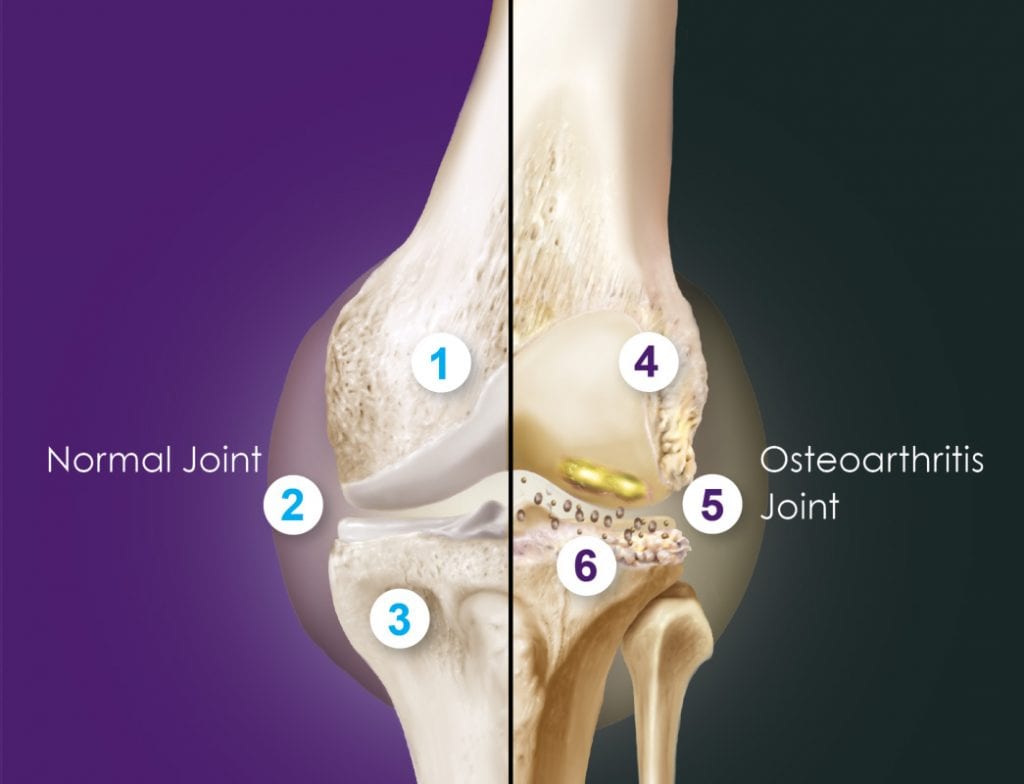Tyto webové stránky používají soubory cookies, abychom vám mohli poskytnout co nejlepší uživatelský zážitek. Informace o souborech cookie se ukládají ve vašem prohlížeči a plní funkce, jako je rozpoznání, když se na naše webové stránky vrátíte, a pomáhají našemu týmu pochopit, které části webových stránek považujete za nejzajímavější a nejužitečnější.
Osteoartróza je chronické (dlouhodobé) onemocnění a nejběžnější forma artrózy.14
Osteoartróza je degenerativní onemocnění kloubů, které může postihnout kloubní chrupavku, kostní tkáň, vazy a další tkáně. Osteoartróza se obvykle vyvíjí s časem, avšak po zranění kloubu se může rozvinout mnohem rychleji. Ke kloubům, které bývají osteoartrózou zasaženy nejčastěji, patří kolenní, kyčelní a ramenní klouby.
Příznaky osteoartrózy často zahrnují bolest kloubů, ztuhlost, otok, omezený rozsah pohybu, křupání nebo lupání a nestabilitu.14,16
V současné době neexistuje žádný lék na osteoartrózu, ale jsou k dispozici možnosti léčby, které pomáhají mírnit bolest, zlepšovat funkci kloubů a v některých případech zpomalovat průběh onemocnění.14
Stadia osteoartrózy kolenního kloubu

Uvnitř kloubu s osteoartrózou
- Zdravá chrupavka: Poskytuje hladký povrch umožňující snadný vzájemný pohyb kostí.
- Synoviální tekutina: Promazává a absorbuje nárazy během aktivity, protože obsahuje vysokou koncentraci kyseliny hyaluronové.
- Kost v normálním kloubu: Poskytuje sílu a podporu pro tkáně a orgány těla.
- Erodovaná chrupavka: Pokud je kompletně opotřebovaná, kosti se bolestivě třou vzájemně o sebe.
- Synoviální tekutina při osteoartróze: Degenerace způsobená osteoartrózou vede ke snížené produkci kyseliny hyaluronové a k oslabené funkční kvalitě
- Kost v kloubu s osteoartrózou: Obsahuje osteofyty, také zvané kostěné výrůstky
Zjistěte více o příčinách, the příznacích , a diagnostice osteoartrózy..


